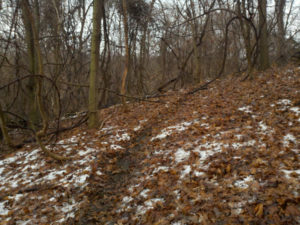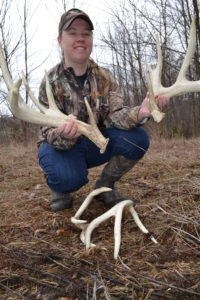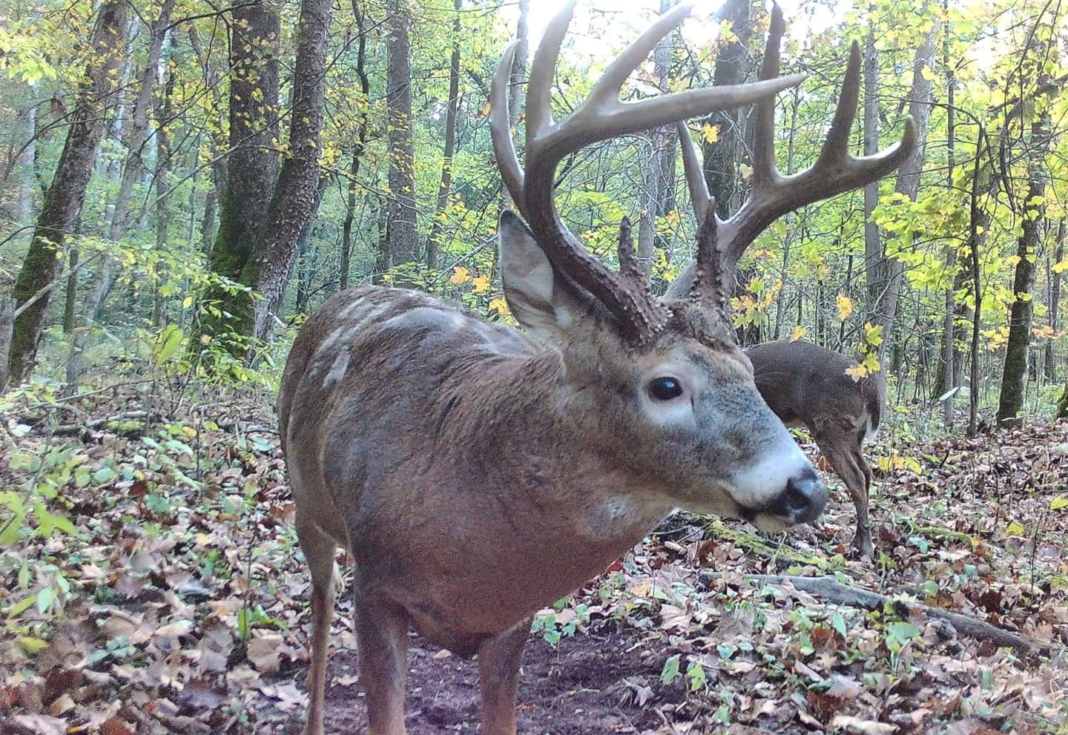The whitetail’s winter woods are a virtual blueprint for the upcoming season and the daily movement patterns of the deer in the area, revealing security cover that is otherwise obscured by the massive brush and food it offers in the fall. This can guide you through travel corridors you had overlooked because you were scouting smart and not penetrating during the pre-season or season scouting.
When you are able to digest and translate the whitetail’s winter woods into a whitetail playbook, you are well on your way to targeting specific deer on your property, and more importantly, learning how and why they use your property.

Mapping the Fall Movement
Talk to any serious whitetail hunter and he will likely say the backbone of his hunting success and opportunities come from intense scouting and planning. The key focus should be on beat-down deer trails made throughout the winter and early spring months, concentrations of tracks, or maybe if you’re lucky enough, the nice buck that eluded you this past fall sheds his antlers and you recover them. Late winter into early spring prior to green-up is a tremendous time to be searching for shed antlers, old rubs and scrapes, and new stand sites. Always be looking for general areas with good deer concentrations, and next fall I will do some intense scouting to verify there is high-quality food sources available in the area and bucks are using the area. Pinpoint specific trees for stand locations and build your plans around those select trees.
The combination of signs to look for are quite simple yet require tuned-in observation and a detailed whitetail circuit board. Some of the traces and signs to look for in winter and spring are a convergence of deer trails, typically on benches, funnels, hedgerows that are littered with old scrapes and rubs from the fall, and of course giant tracks (tracks don’t lie). Be sure to be in the vicinity of high-quality food and bedding cover, and be sure that the food and bedding are within a half mile of your selected stand or blind locations.

Creating a Whitetail Paradise
The advantages of scouting when there is snow or just after the snow has melted are often overlooked scouting opportunities! With a little effort, you can see exactly where the deer are traveling, where they are bedding, and what they are eating. Most times, during late winter into early spring, high-quality food sources are scarce and depleted so the travel information is much more valuable than reading food sources. You can easily find these little hidden gems by tracking the deer in the snow cover or muddy spring outlines of deer movement. Once you find these locations, try to choose a set up that allows you to access in/out without spooking deer for a future hunt.
Bedding areas for mature bucks during the late winter and early spring will likely differ than the bedding spots they preferred during October and November, so being able to backtrack deer to their bedding locations is a huge advantage and will put you in the game when the ladies are ready. One of my favorite late-winter scouting tactics is backtracking a buck that you witnessed traveling from the food source to his bed. There are so many little hints to be learned by doing this. You not only get to see how he traveled through the cover but also how he used the terrain and the wind to his advantage and the exact bed he was laying in. This is huge when trying to dissect a buck and his habits.
Mature bucks try to stay off of the beaten path and if you can uncover some of these locations, you are on your way to amazing hunting opportunities.



















![The Best Deer Camp Chili [VIDEO] Deer Chili Ingredients, Tomatoes, Chili Spices](/wp-content/uploads/2015/10/Deer-Chili-Deer-Camp-Recipe-218x150.jpg)
![How to Call Elk Early in the Season [VIDEO]](/wp-content/uploads/2016/08/byers003-218x150.jpg)




![Idiots Disturb Hunter: How Would You Have Handled It? [VIDEO]](/wp-content/uploads/2015/10/DSC00110-e1474487693878-100x70.jpg)
![Albino Buck Shocked to Shed His Antlers [VIDEO]](/wp-content/uploads/2015/10/AlbinoDeer-100x70.jpg)